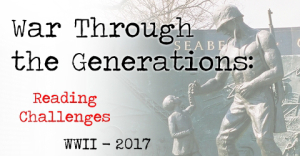 I’m happy to spotlight another book from Paulette Mahurin today. I like to draw attention to Paulette’s books because she uses all the profits to help rescue dogs from kill shelters. One of our three guinea pigs was rescued from a kill shelter by a local organization, and I can’t imagine our lives without our sweet little boy, so I want to do what I can to help promote Paulette’s efforts. If you follow Paulette on social media, you know that she has helped rescue hundreds of dogs so far.
I’m happy to spotlight another book from Paulette Mahurin today. I like to draw attention to Paulette’s books because she uses all the profits to help rescue dogs from kill shelters. One of our three guinea pigs was rescued from a kill shelter by a local organization, and I can’t imagine our lives without our sweet little boy, so I want to do what I can to help promote Paulette’s efforts. If you follow Paulette on social media, you know that she has helped rescue hundreds of dogs so far.
I hope you’ll take a look at her newest novel, The Old Gilt Clock. (You can click the link to buy on Amazon.)
During one of the darkest times in human history when millions of innocent Jews and others deemed “undesirables” were being sent to concentration camps to be brutality worked to death or slaughtered, a group of Dutch resistance workers rose up against the atrocities. Their resistance to the Nazi occupation of the Netherlands created a vast counterintelligence, domestic sabotage, and communications network to help hide Jewish people from German authorities. The Old Gilt Clock is the story of how one Dutch resistance member, Willem Arondéus, risked his life to defy the Nazis’ plans to identify and deport hundreds of thousands of Dutch Jews. Arondéus’ courage is largely forgotten by history, but not by the Jewish and Dutch people. Written by the award-winning international Amazon bestselling author of The Seven Year Dress, comes a story of Arondéus’ courageous struggle to stand up to the unimaginable evil designs of Hitler. Inclusive is Arondéus’ battle to come out to his homophobic father, who hated his son’s homosexuality. It is also a story about friendships formed in the Dutch resistance movement, their joys and sorrows, their wins and losses, their loves and betrayals, and ultimately their resilience to oppose tyranny and oppression when millions stood silent condoning heinous behavior. Thousands are alive today because of these brave, compassionate men and women.
About the Author:
Paulette Mahurin is an international best-selling literary and historical fiction novelist. She lives with her husband Terry and two dogs in Ventura County, California. She grew up in West Los Angeles and attended UCLA, where she received a Master’s Degree in Science.
Her first novel, The Persecution of Mildred Dunlap, made it to Amazon bestseller lists and won awards, including best historical fiction 2012 in Turning the Pages Magazine. Her second novel, His Name Was Ben, originally written as an award winning short story while she was in college and later expanded into a novel, rose to bestseller lists its second week out. Her third novel, To Live Out Loud, won international critical acclaim and made it to multiple sites as favorite read book of 2015. Her fourth book, The Seven Year Dress, made it to the top ten bestseller lists on Amazon U.S., Amazon U.K. and Amazon Australia. Her fifth book, The Day I Saw The Hummingbird, was released in 2017 to rave reviews. Her sixth book, A Different Kind of Angel, was released in August, 2018, also to rave reviews.
Semi-retired, she continues to work part-time as a Nurse Practitioner in Ventura County. When she’s not writing, she does pro-bono consultation work with women with cancer, works in the Westminster Free Clinic as a volunteer provider, volunteers as a mediator in the Ventura County Courthouse for small claims cases, and involves herself, along with her husband, in dog rescue. Profits from her books go to help rescue dogs from kill shelters.
Congratulations, Paulette, on your latest novel, and thank you for your animal rescue work!







 After a year hiatus, Serena and I are back to host the 2017 World War II Reading Challenge on
After a year hiatus, Serena and I are back to host the 2017 World War II Reading Challenge on 
